Want to make your garden BLOOM with COLOR all year round? You must check out small perennial flowers! They’re the BOMB!
At AsterGardening, we understand the role of FLOWERS. They ELEVATE and make the OUTDOOR space LIVELY.
We have a TEAM of pro-horticulturists who put together a killer guide on small PERENNIAL pinks.
After reading our ARTICLE, you’ll be a PRO selecting and caring for these CUTE little flowers.
They’re EASY to maintain so you can ENJOY their BEAUTY year after year.
We’ve got many perennial plants to CHOOSE from, and we’ll GO OVER ‘EM. Get ready to pimp your garden with the AWESOMENESS of PERENNIAL plants.
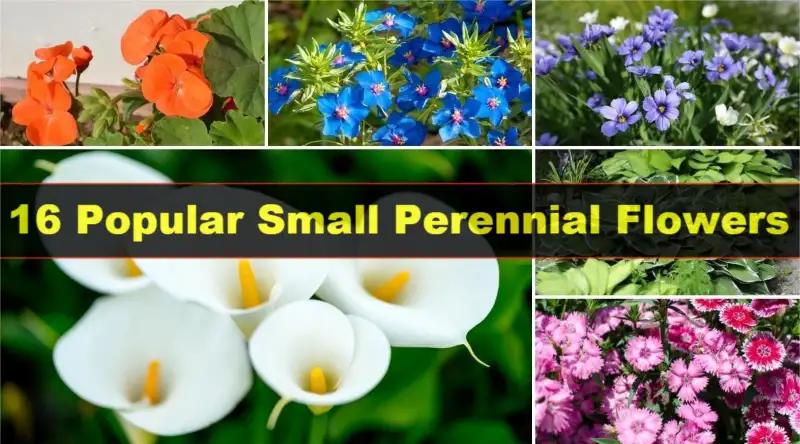
What are annuals vs perennials?

Let’s talk about two TYPES of plants – annuals and perennials.
So, ANNUALS are plants that COMPLETE their whole LIFE CYCLE in just one growing season. They will grow, bloom, produce SEEDS, and DIE off in the fall or winter.
Marigolds, petunias, and zinnias are some EXAMPLES of annuals.
Perennials are like vampires, but they need SUNLIGHT! These plants can LIVE for multiple growing seasons.
They’ll grow and bloom for several years. However, they DIE back during winter before regrowing again in the early spring.
Daylilies, hostas, and peonies are perfect for a SPRING garden.
If you want a garden that BLOOMS year after year, you must choose the right plants for the job.
16 Popular Small Perennial Flowers
Look at the 16 POPULAR small perennial FLOWERS that can ADD color and charm to any garden.
1. Alyssum
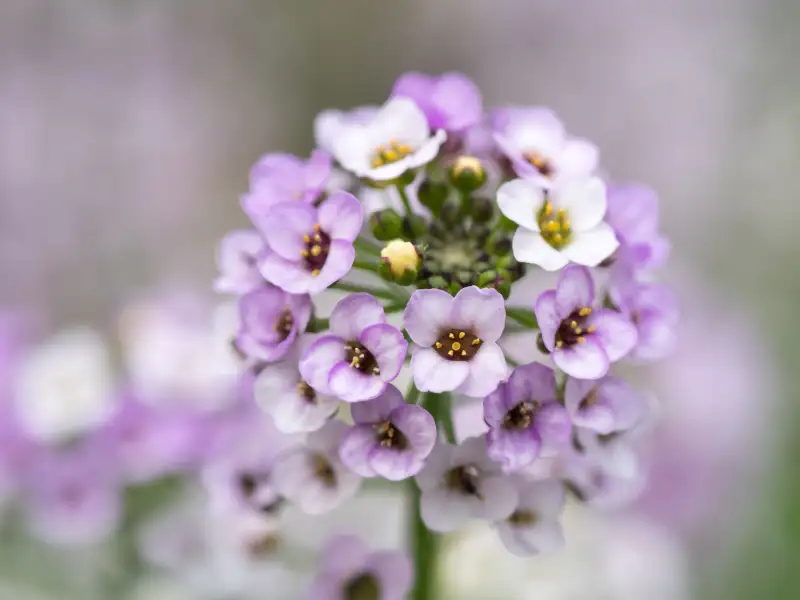
Have you heard of Alyssum? These are CUTE little white flowers that come in pink and lavender colors and smell SUPER sweet!
There are more than 100 different types of Alyssum to choose from. You can plant it in FLOWER beds or pots or use it to cover BARE ground.
Ensure well-draining soil and lots of suns for this small space plant. However, it’s okay if it’s only PARTIAL shade. Alyssum doesn’t NEED much water, which is perfect for HOT and DRY places.
It’s also pretty TOUGH and can even survive some frost. The place to GROW it is between USDA zones 3-9.
2. Coreopsis
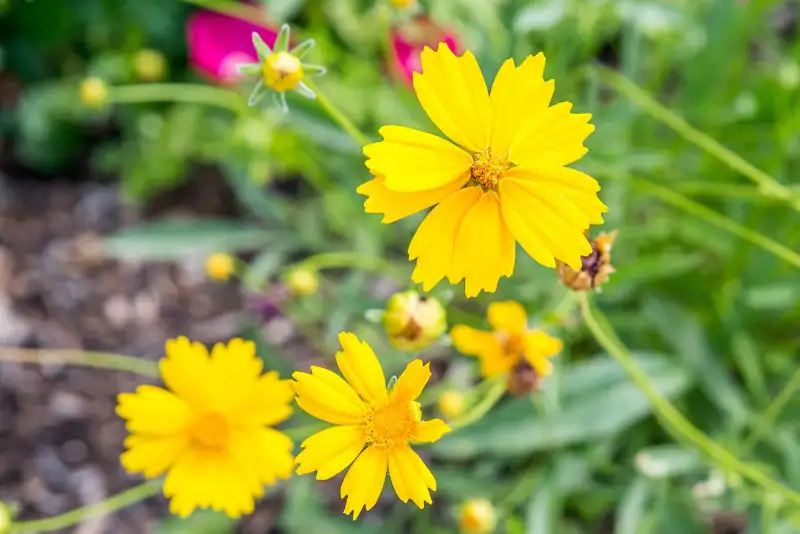
Coreopsis is a COOL flower that’s NATIVE to North America and has been cultivated for over 400 years!
That’s a PRETTY long time, right?
Coreopsis adds COLOR to any garden with its pink daisy-like and BRIGHT yellow flowers.
I can tell you that Coreopsis is basically the superhero of the garden. It’s SUPER tough and DROUGHT-TOLERANT like a champ. Talk about RESILIENCE!
I suggest planting it in well-draining soil and giving it lots of sun to PARTIAL shade. And the BEST part? It’s hardy in USDA zones 4-9, so it can grow ANYWHERE.
3. Creeping Phlox
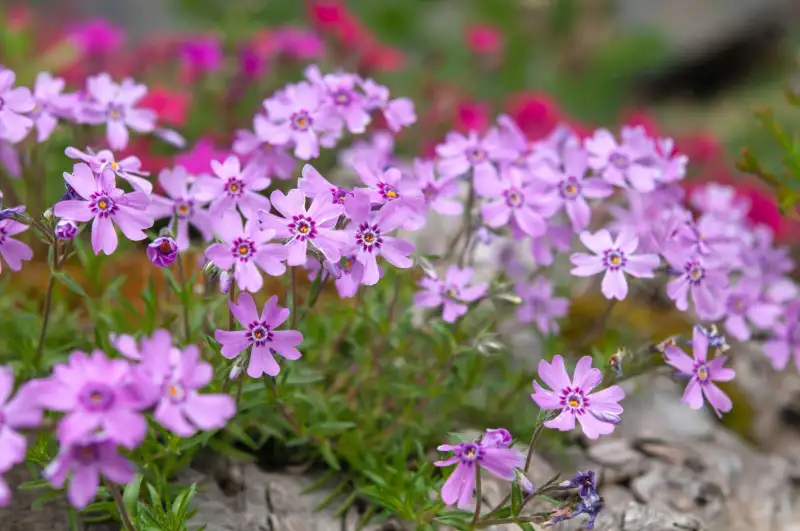
Creeping phlox is a perennial flower from North America’s east side. It’s an ATTRACTIVE small, star-shaped flower with SHADES of pink, blue, and white.
It’s not just a PRETTY face!
These low-growing perennial pinks ATTRACT butterflies and hummingbirds. Who wouldn’t want those FLUTTERING around in their garden?
Creeping phlox likes WELL-DRAINING soil and needs FULL sun. But it can also handle poor soil and a bit of SHADE.
And here’s some GOOD news: These fringed flowers are TOUGH! They are DROUGHT-TOLERANT and thrive in USDA zones 3-8.
Plus, you can propagate these star-shaped flowers by dividing them if you want more. How EASY is that?
4. Goldenrod

Goldenrod is a rad perennial plant that’s NATIVE to North America. From mid-summer to early fall, this baby BLOOMS is a TOTAL showstopper in any garden.
Goldenrod is TOUGH; it can handle full sun and well-drained soil like a champ. Plus, it’s a MAGNET for all pollinators, including bees and butterflies.
To top it off, Goldenrod is also a LOW-MAINTENANCE plant. It looks similar to the dwarf fountain grass but different colors.
It’s my go-to pick for a perennial flower for a small garden. This plant grows best in USDA growing zones 3-9.
5. Hostas
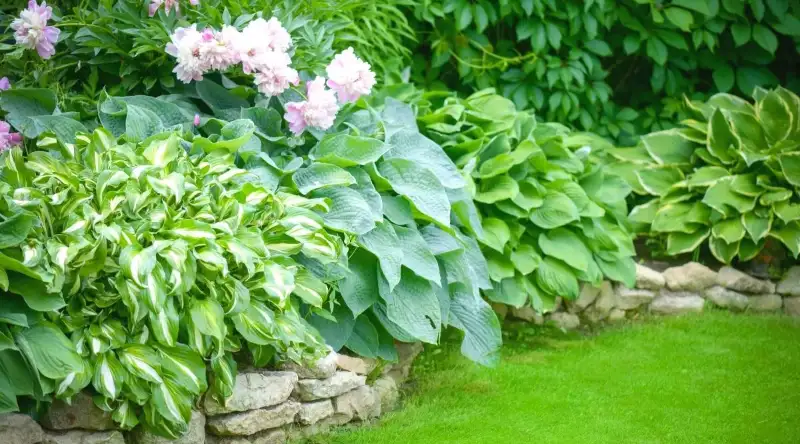
Hostas are beautiful plants native to Japan, Korea, and China. They TRAVELED to Europe in the 1700s and THEN to America in the 1800s.
Don’t worry if you don’t get lots of suns because they like partial and full shade. And they NEED loamy or clay soil that’s WELL-DRAINED too.
But the best thing is their LEAVES! They come in all COLORS – from dark green to blue-green leaves. Some have green foliage with white, gold, blue, and deep green leaves.
Hosta is worth considering if you’re looking for a GREAT plant to fill those shady garden spots.
They’re pretty TOUGH – they can handle growing in USDA zones 3-9.
6. Hardy Geranium
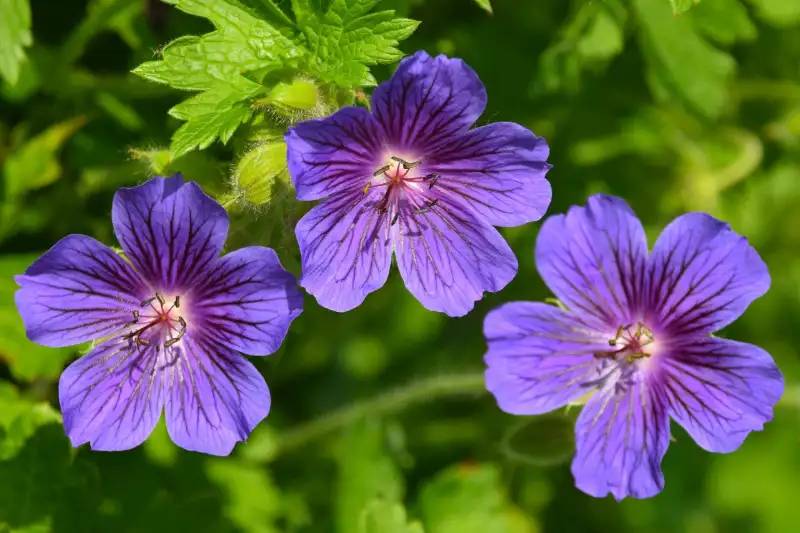
Hardy Geraniums, aka cranesbill, are COOL plants from Europe and Asia.
They come in all COLORS, like PINK, PURPLE, BLUE, and WHITE! So there’s a shade to fit your STYLE.
Mind that these PLANTS thrive in FULL SUN but can also handle some SHADE. And make sure to plant them in moist soil that DRAINS well.
Hardy Geranium can range from late SPRING through FALL! So you’ll have plenty of time to ENJOY them.
They’re perfect for excellent ground cover and garden BORDERS in USDA zones 4-8.
7. Irish Moss
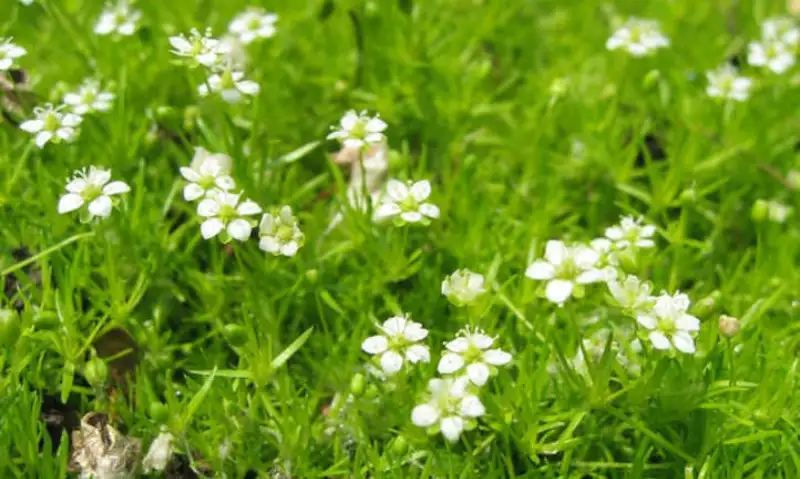
Irish Moss is a GREAT little plant, also known as Sagina subulata. Even though it’s called Moss, it’s NOT moss at all!
Irish Moss loves cool and moist climates. It also prefers WELL-DRAINED acidic soil and partial shade to full sun.
But the GOOD NEWS is that it’s SUPER HARDY in USDA zones 4-9, so it can SURVIVE in various climates.
As a fellow gardener, I must say that Irish Moss is one of my FAVORITE groundcovers. It grows best in a smaller garden.
It’s VERSATILE and EASY to grow. You can add great TEXTURE and interest to small gardens, PATHWAYS, and borders.
8. Brunnera Macrophylla

Brunnera macrophylla is a pretty cool perennial plant. It is a native plant to Siberia and the Caucasus Mountains WOODLANDS.
It has ATTRACTIVE green foliage and DELICATE blue flowers that bloom early in the spring. And get this, Brunnera macrophylla has various leaf colors and patterns.
So it’s like you have OPTIONS, man. Jack Frost and Looking Glass are TOUGH dudes in this plant FAMILY.
Now, here’s the thing. Brunnera macrophylla likes MOIST, WELL-DRAINED soil, and partial shade to full shade.
So, it’s perfect for planting in WOODLAND gardens or shady borders.
You can even count on it to SURVIVE in USDA zones 3-8. That’s pretty DOPE for a small garden plant.
9. Nierembergia
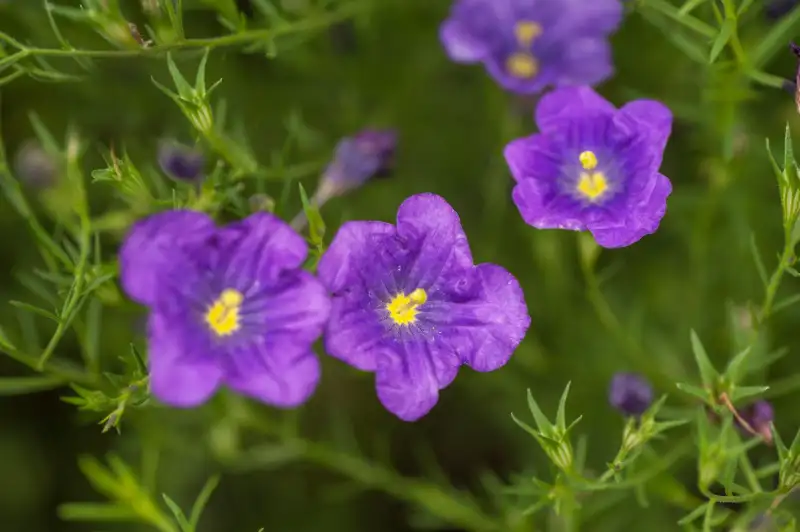
Want to hear about a COOL plant that will BRIGHTEN up your garden? Check out Nierembergia!
It’s a FANCY name for a type of flower that’s from SOUTH AMERICA. These beauties have ADORABLE, DELICATE blue, white, and purple flowers.
Did you know there are different kinds of Nierembergia? The most POPULAR is Mont Blanc with WHITE flowers and Starry Eyes with BLUE flowers.
They like full sun and well-drained soil. They can survive in USDA zones 9-11 but make great ANNUALS in places with COLD winters.
Nierembergia is a fantastic choice to add PIZZAZZ to your garden during the SUMMER.
10. Periwinkle
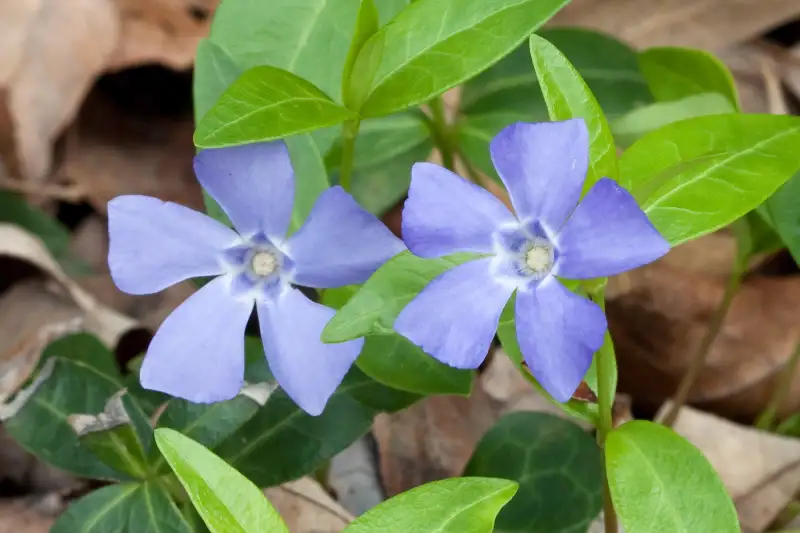
Periwinkle (Vinca) is an awesome and hardy evergreen plant. It makes a great addition to your BORDERS and GROUNDCOVERS.
Periwinkle comes from EUROPE and ASIA. It has been grown for CENTURIES because of its ELEGANT flowers.
Here’s the best part: periwinkle is SUPER easy to grow and care for! All it needs is some PARTIAL to COMPLETE SHADE and soil that DRAINS well.
Plus, it’s STUNNING when they bloom in the early spring and summer.
Here’s a FUN fact: periwinkle is originally from the MEDITERRANEAN. If you live in USDA growing zones 4-9, then periwinkle would be PERFECT!
11. Sun Rose

Sun Rose is a TOUGH, VERSATILE evergreen plant that pumps many BEAUTIFUL flowers.
It’s super cool because it LOVES the sun and well-drained soil. What I love about Sun Rose are the VIBRANT flowers it bears from SPRING to early SUMMER.
I highly RECOMMEND using Sun Rose to add color and interest to your small gardens and slopes.
Trust me; it’ll give those HARD-TO-PLANT areas a much-needed POP of COLOR!
Oh, and get this: Sun Rose is originally from CHILLY places like Europe and Asia. But don’t worry. It can still THRIVE in USDA growing zones 5-9.
12. Spurge
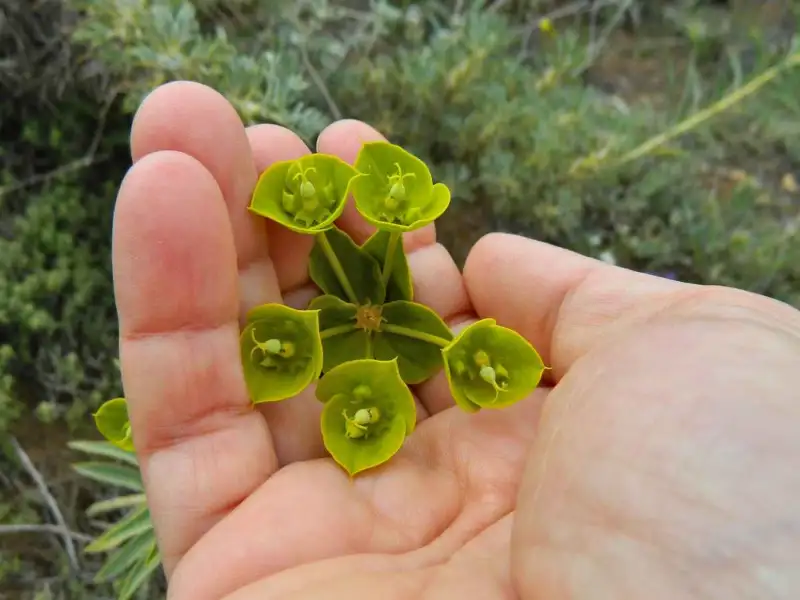
So you’re interested in SPURGE, huh? Well, let me tell you, this plant is amazing! People call it Euphorbia, but whatever you want, it’s BEAUTIFUL.
The best thing about Spurge is how EASY it is to grow and care for. It likes SUNSHINE but can tolerate a LITTLE SHADE and needs soil that DRAINS well.
Spurge adds a lot of texture and interest to a garden BED. Plus, it’s not very HIGH-MAINTENANCE since it can resist DEER and survive a DRY SPELL.
It is originally from Africa and Asia and thrives in moderate to warm weather. It’s a great CHOICE for people living in USDA Hardiness zones 4-11.
13. Sedums
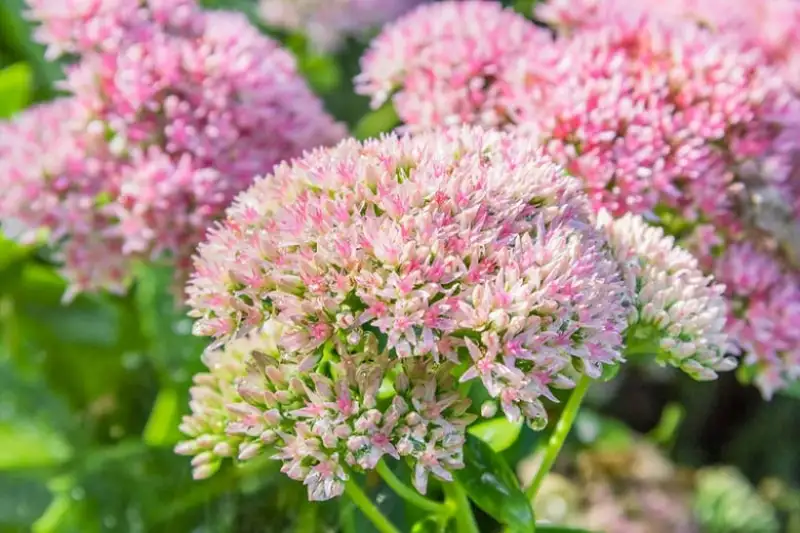
Sedums are low-growing perennials native to Asia, Europe, and North America. They THRIVE in well-draining soil with PLENTY of sunlight.
These plants come in SHADES of green, pink, red, and yellow flowers. They also BLOOM with small, star-shaped FLOWERS.
The parent species of Sedums are found in USDA growing zones 3 to 11. It MAKES them adaptable to a RANGE of climates.
I have found SEDUMS to be a great addition to my garden edges. They REQUIRE very LITTLE water and attention.
It makes them PERFECT for busy gardeners or those with small spaces.
14. Viola cornuta
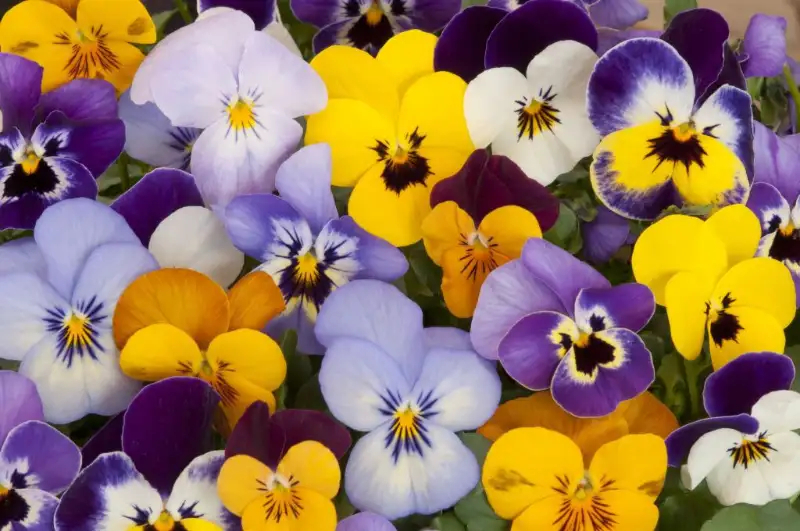
Viola Cornuta, also known as the Horned Violet or Tufted Pansy. They are delicate, low-growing perennials NATIVE to Europe and Asia.
It has many different CULTIVARS, from white and yellow to purple and blue FLOWERS.
Viola Cornuta PREFERS partial shade and well-draining soil can be grown in USDA zones 5 to 9.
These compact plants have LONG blooming periods and can ATTRACT pollinators.
Due to their hard nature, I suggested using them for BORDERS and CONTAINERS. They are easy to GROW and ADD color to any garden.
15. Wallflower
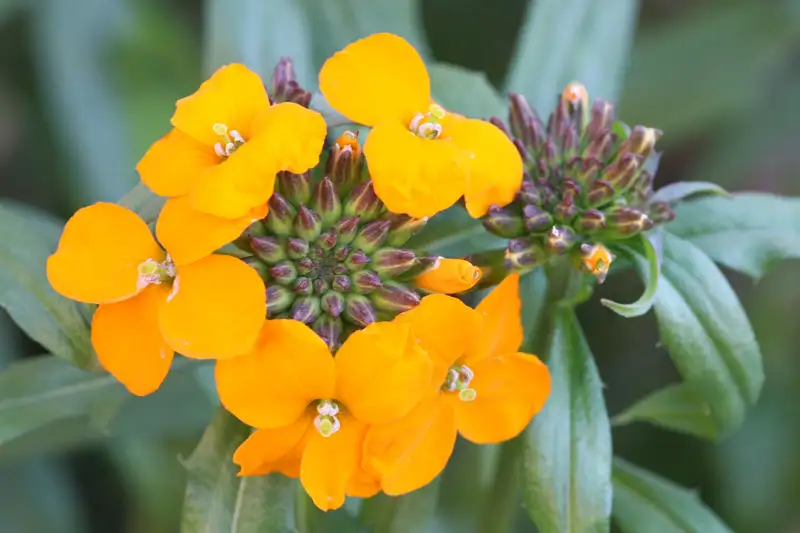
Wallflowers are colorful plants native to Europe and Asia. Many cultivars have SHADES of yellow, orange, red, and purple.
They PREFER full sun and average soil and can be GROWN in USDA zones 6 to 9. Their sweet FRAGRANCE makes them a POPULAR choice for cut flowers and borders.
I have EXPERIMENTED and found that Wallflowers are PERFECT as low-growing perennials. They attract pollinators to my garden and ADD color to my flower beds.
They also RESEED themselves, making them LOW-MAINTENANCE plants. Wallflowers can grow 1-3 feet tall when properly cared for.
16. Verbena
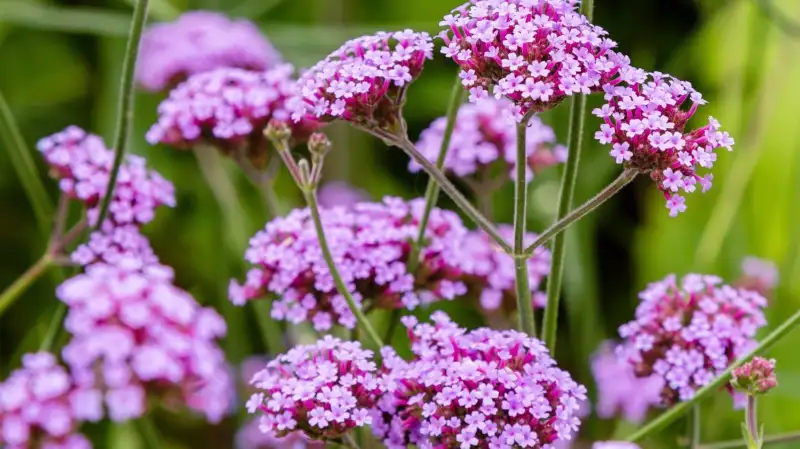
Verbena is a genus of flowering perennials native to North and South America, Europe, and Asia.
They COME in many colors, including pink, purple, blue, and red. These herbaceous perennials can ATTRACT butterflies and pollinators.
They grow best in full sun and well-draining soil. Some popular CULTIVARS of Verbena include Homestead Purple, Sissinghurst, and Tuscany.
Verbena can be grown in USDA growing zones 7-11. However, some species can GROW in colder climates with the RIGHT care.
Although they are HARDY and EASY to grow, I rate them moderately difficult. I SUGGEST growing them for small gardens, borders, and mass plantings.
Suggested reading: 7 Types Of Perennial Sunflower: Cultivate A Stunning And Thriving Garden
FAQs about Small Perennial Flowers
1. Is there a perennial flower that blooms all summer?
Yes, many perennial flowers bloom all summer. Some common names include coneflowers, Coreopsis, and salvia. Choosing the right varieties and providing proper care can do the job. It can help keep the blooms going all season.
2. What flower stays in bloom the longest?
Several flowers stay in bloom for a long time. Some common options are garden phlox, yarrow, and daylilies. Deadheading spent flowers and providing proper care can help extend their bloom time.
3. Are hydrangeas perennials?
Yes, hydrangeas are perennials. They return year after year and can live for decades with proper care. Hydrangeas are known for their large, showy blooms and are popular in small gardens.
4. Do perennials need to be cut back every year?
It depends on the plant. Some perennials benefit from being cut back yearly, while others do not. Cutting back can help rejuvenate the plant and promote healthy growth. However, it is important to research the specific needs of each plant before pruning.
What’s Next
Alrighty, FOLKS! That’s it for today’s ARTICLE. Let’s wrap it up!
Small PERENNIALS are the way to go and make your GARDEN pop without HASSLE. They’re SUPER low maintenance and look FANTASTIC for years on end.
These little guys keep coming back, which is SUPER reliable and BUDGET-friendly.
You have LEARNED the difference between annuals and perennials. Select any VIBRANT perennial from your garden’s list of 16 SMALL perennials.
Unlock successful GARDENING secrets with AsterGardening, the ULTIMATE destination for PLANT enthusiasts.
Find what you need to cultivate your GREEN thumb and achieve the GARDEN of your DREAMS. Visit us now for expert advice and comprehensive guides.
